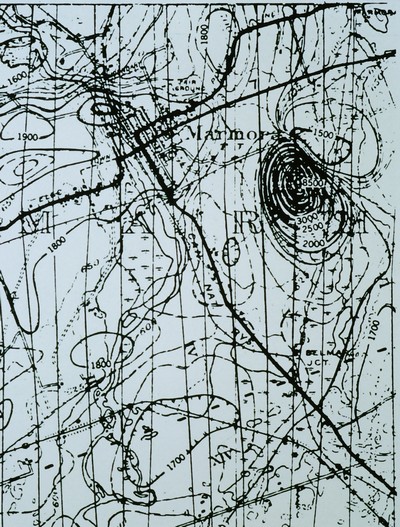The Geological Survey of Canada initiated its airborne magnetic survey program in 1947 using surplus military equipment from the Second World War – namely, a fluxgate magnetometer used by the U.S. navy for submarine detection, and an Anson and later a Canso aircraft with crew seconded from the Royal Canadian Air Force.
The first surveys, in what would become an ongoing national program, were conducted in southeastern Ontario. In 1949, a contracted survey revealed an intense circular anomaly near the town of Marmora, Ontario. This attracted the attention of the Bethlehem Steel Company. It carried out drilling, resulting in the discovery of a massive 20-million-ton iron deposit in 1950.
The Marmoraton Mine opened in 1955, and production continued until ore reserves were depleted in 1978. An economic analysis by Survey geologist Arthur Lang showed that the value of mine production from 1955 to 1969 was $198 million. This dwarfed the $45,000 cost of the original airborne survey and, indeed, far exceeded the total expenditures of the Survey since its founding in 1842.
Category: Exploration
Decade: 1940s
References
Hood, P.J., 1990. Aeromagnetic Survey Program of Canada, Mineral Applications, and Vertical Gradiometry; in Hanna, W.F., Geologic Applications of Modern Aeromagnetic Survey; USGS Bulletin 1924, p. 7-23.
Lang, A.H., 1970. Discovery and benefits of the Marmora iron deposit; Canadian Mining Journal, v. 91, p. 47–49.


